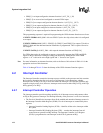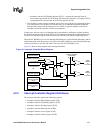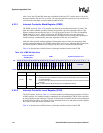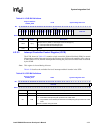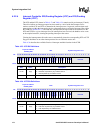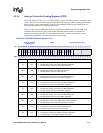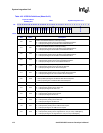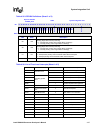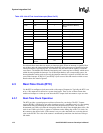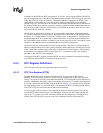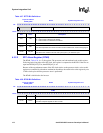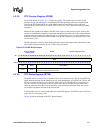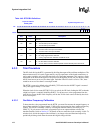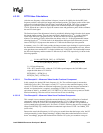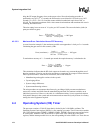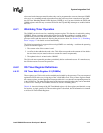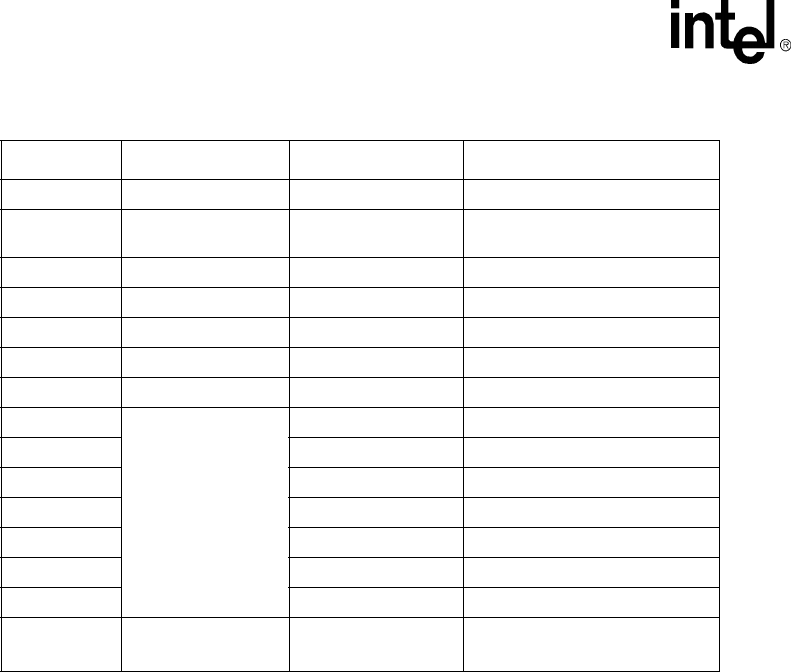
4-28 Intel® PXA255 Processor Developer’s Manual
System Integration Unit
Several units have more than one source per interrupt signal. When an interrupt is signalled from
one of these units, the interrupt handler routine identifies which interrupt was signalled using the
interrupt controller’s pending register. This identifies the unit that made the request, but not the
exact source. The handler then reads the interrupting unit’s status register to identify which source
within the unit signalled the interrupt. For all interrupts that have one corresponding source, the
interrupt handler routine needs to use only the interrupt controller’s registers to identify the exact
cause of the interrupt. ICPR[16:15] and ICPR[7:0] are reserved bits and must be written as zeros.
Reads to these bits must be ignored.
4.3 Real-Time Clock (RTC)
Use the RTC to configure a clock source with a wide range of frequencies. Typically, the RTC is set
to be a 1 Hz output and is utilized as a system time keeper. There is also an alarm feature that
enables an interrupt or a wake up event when the RTC output clock increments to a pre-set value.
4.3.1 Real-Time Clock Operation
The RTC provides a general-purpose real-time reference for your design. The RTC Counter
register (RCNR) is initialized to zero after a hardware reset or a watchdog reset. It is a free running
counter that starts incrementing the count value after the deassertion of reset. The counter is
incremented one 32kHz cycle after the rising edge of the Hz clock. Since the high phase of the 1 Hz
clock is one 32kHz cycle wide, it appears to increment on the falling edge of the 1 Hz clock. Set
this counter to the desired value. If the counter is set to a value other than zero, write the desired
value to the RCNR. The value of the counter is unaffected by transitions into and out of Sleep or
Idle mode.
IS<13> I2S 5 I2S interrupt
IS<12> Core 1
PMU (Performance Monitor)
interrupt
IS<11> USB 7 USB interrupt
IS<10> 79 “OR” of GPIO edge detects 80-2
IS<9> 1 GPIO<1> edge detect
IS<8> 1 GPIO<0> edge detect
IS<7> Hardware UART 7 Hardware UART service request
IS<6> reserved
IS<5> reserved
IS<4> reserved
IS<3> reserved
IS<2> reserved
IS<1> reserved
IS<0> reserved
Total level 2 interrupt
sources
179
Table 4-36. List of First–Level Interrupts (Sheet 2 of 2)
Bit Position Source Unit # of Level 2 Sources Bit Field Description



